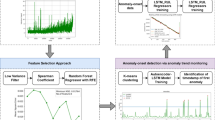Abstract
We propose to design and to evaluate an on-board intelligent health assessment tool for rotorcraft machines, which is capable of detecting, identifying, and accommodating expected system degradations and unanticipated catastrophic failures in rotorcraft machines under an adverse operating environment. A fuzzy-based neural network paradigm with an on-line learning algorithm is developed to perform expert advising for the ground-based maintenance crew. A hierarchical fault diagnosis architecture is advocated to fulfill the time-critical and on-board needs in different levels of structural integrity over a global operating envelope. The research objective is to experimentally demonstrate the feasibility and flexibility of the proposed health monitoring procedure through numerical simulations of bearing faults in USAF MH-53J PAVELOW helicopter transmissions. The proposed fault detection, identification and accommodation architecture is applicable to various generic rotorcraft machines. The proposed system will greatly reduce the operational and developmental costs and serve as an essential component in an autonomous control system.
Similar content being viewed by others
References
G.G. Yen, “Reconfigurable learning control in large space structures”, IEEE Transactions on Control Systems Technology, Vol. 2, pp. 362–370, 1994.
H.E. Rauch, “Intelligent fault diagnosis and control reconfiguration”, IEEE Control Systems Magazine, Vol. 14, pp. 6–12, 1994.
H. Chin, K. Danai and D.G. Lewicki, “Fault detection of helicopter gearboxes using the multivalued influence matrix method”, NASA Technical Memorandum 106100, March 1993.
R.V. Beard, “Failure accommodation in linear systems through self-organization”, Technical Report MVT-71-1, Man Vehicle Lab, MIT, Cambridge, MA, February 1971.
R.K. Mehra and I. Peshon, “An innovations approach to fault detection and diagnosis in dynamic systems”, Automatica, Vol. 7, pp. 637–640, 1971.
J.C. Deckert, M.N. Desai, J.J. Deyst and A.S. Willsky, “Dfbw sensor failure identification using analytic redundancy”, IEEE Transactions on Automatic Control, Vol. 22,pp. 795–809, 1997.
M. Kitamura, “Detection of sensor failures in nuclear plant using analytic redundancy”, Transactions on American Nuclear Society, Vol. 34, pp. 581–583, 1980.
M.M. Polycarpou and A. Vemuri, “Learning methodology for failure detection and accommodation”, IEEE Control Systems Magazine, Vol. 15, pp. 16–24, 1995.
Author information
Authors and Affiliations
Rights and permissions
About this article
Cite this article
Yen, G.G. Health monitoring of vibration signatures in rotorcraft wings. Neural Process Lett 4, 127–137 (1996). https://doi.org/10.1007/BF00426021
Issue Date:
DOI: https://doi.org/10.1007/BF00426021




